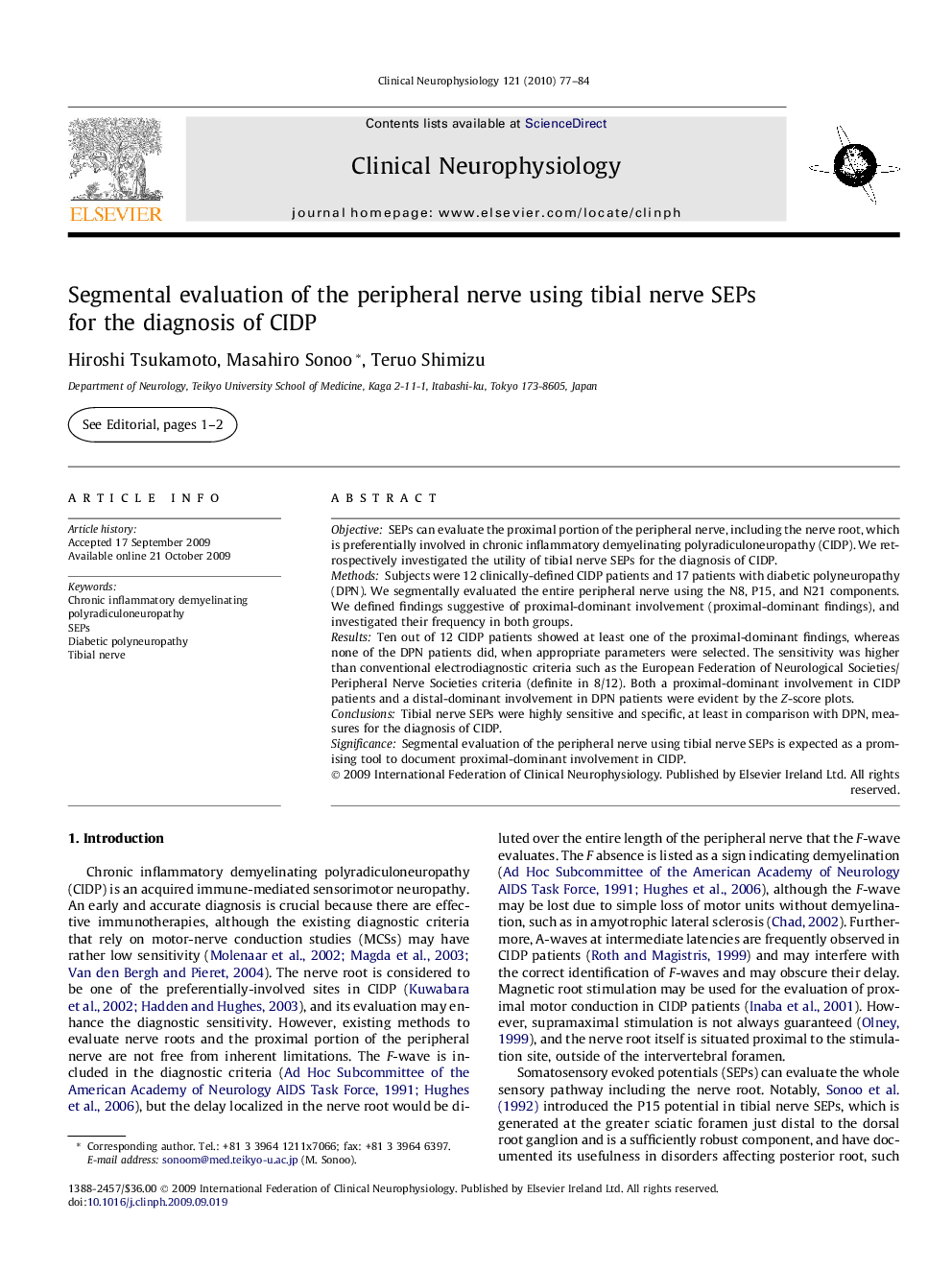| Article ID | Journal | Published Year | Pages | File Type |
|---|---|---|---|---|
| 3045351 | Clinical Neurophysiology | 2010 | 8 Pages |
ObjectiveSEPs can evaluate the proximal portion of the peripheral nerve, including the nerve root, which is preferentially involved in chronic inflammatory demyelinating polyradiculoneuropathy (CIDP). We retrospectively investigated the utility of tibial nerve SEPs for the diagnosis of CIDP.MethodsSubjects were 12 clinically-defined CIDP patients and 17 patients with diabetic polyneuropathy (DPN). We segmentally evaluated the entire peripheral nerve using the N8, P15, and N21 components. We defined findings suggestive of proximal-dominant involvement (proximal-dominant findings), and investigated their frequency in both groups.ResultsTen out of 12 CIDP patients showed at least one of the proximal-dominant findings, whereas none of the DPN patients did, when appropriate parameters were selected. The sensitivity was higher than conventional electrodiagnostic criteria such as the European Federation of Neurological Societies/Peripheral Nerve Societies criteria (definite in 8/12). Both a proximal-dominant involvement in CIDP patients and a distal-dominant involvement in DPN patients were evident by the Z-score plots.ConclusionsTibial nerve SEPs were highly sensitive and specific, at least in comparison with DPN, measures for the diagnosis of CIDP.SignificanceSegmental evaluation of the peripheral nerve using tibial nerve SEPs is expected as a promising tool to document proximal-dominant involvement in CIDP.
